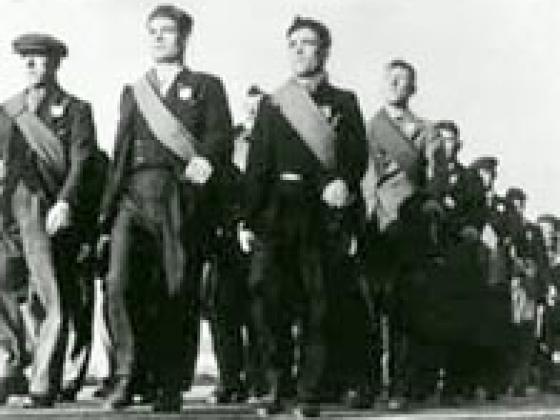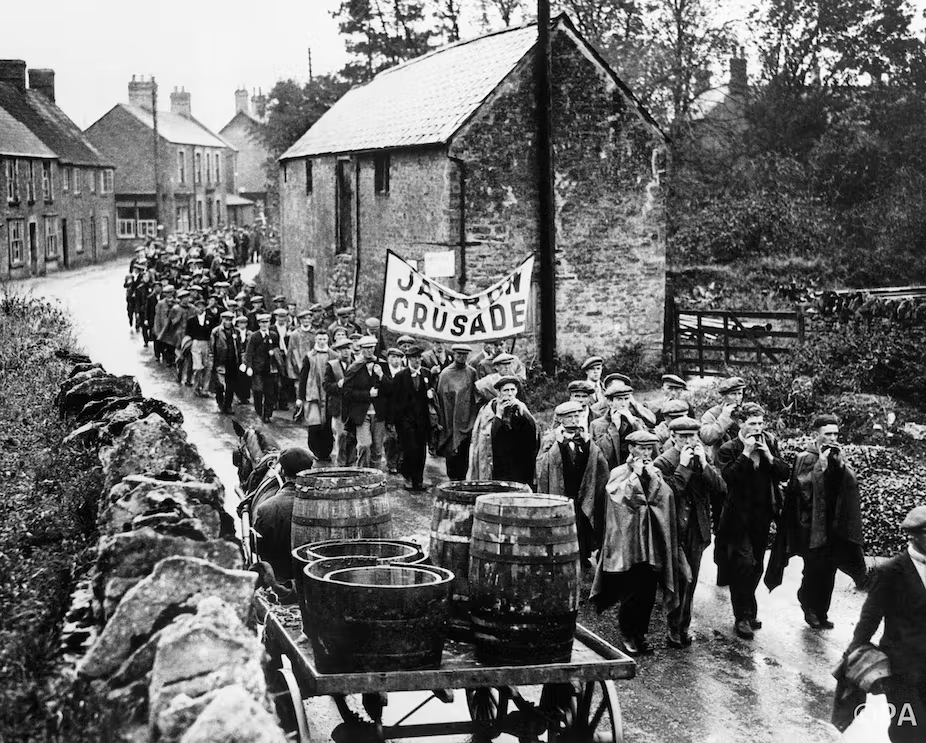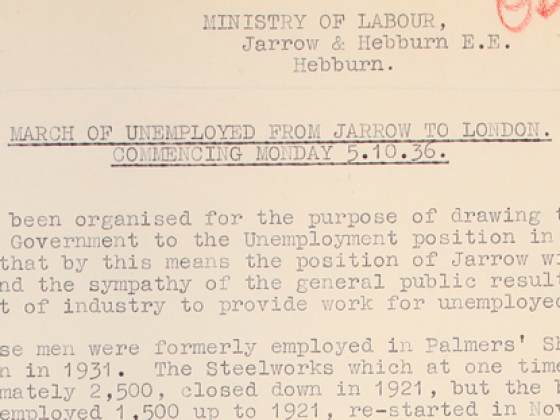During World War One, many ships sank, so after the war there were a few years when there was high demand for building new ships. However, by the mid 1920s, enough ships had been built to meet demand. This was partly a result of the peace terms, under which Germany was expected to build ships to be distributed among the Allies.
When demand for ships was high, there was a lot of work on the rivers. However, when there were enough ships (or enough tonnage), and no new ones were needed, there was no work. In the years before the Second World War, workers were employed through the ‘market’. Men turned up each morning to sell their labour, and the lucky ones were picked by the foreman. Men who were skilled and who were well known were most likely to have work through this system: unskilled labourers, outsiders or men labelled as ‘trouble’ for any reason risked being sent home again.
.jpg) Keel Square in Sunderland has list of every ship built in the town. If you walk along it, you will see that in some years, there must have been very little employment for shipyard workers. After the stock market crash of 1929, there was less trade, so fewer ships were needed, the Depression hit shipbuilding towns hard. Many people left the North East to find work elsewhere.
Keel Square in Sunderland has list of every ship built in the town. If you walk along it, you will see that in some years, there must have been very little employment for shipyard workers. After the stock market crash of 1929, there was less trade, so fewer ships were needed, the Depression hit shipbuilding towns hard. Many people left the North East to find work elsewhere.
During the 1930s depression, many shipyards were closed – some permanently. This was partly a deliberate strategy. In 1928 the Shipbuilding Conference was formed, an association of British shipbuilding firms. They agreed to reduce the overall shipbuilding ‘capacity’ to drive up competition. In order to do this, National Shipbuilders Security Ltd (NSS) was formed in 1930. Between 1930-1938, NSS not only closed but ‘sterilised’ shipbuilding berths and yards. For example, when the famous Palmers yard in Jarrow was closed in 1933, an agreement with the NSS meant shipbuilding at the site was banned for 40 years. The closure of Palmers led to more than 7,000 people being unemployed – 70% of the town’s workforce! This led to the famous Jarrow Crusade of 1936, when 200 men, supported by the local MP Ellen Wilkinson, walked all the way to London to ask the Government to do something to create jobs.
The actions of the NSS had a bad impact on the relationship between owners and the workers that had long-term consequences.
The outbreak of war in 1939 meant ships were once again needed, and the North East again became a busy place of shipbuilding and ship repair.

BBC History Jarrow Crusade
(External link)
This BBC article by Christine Collette remembers the events surrounding the Jarrow Crusade.

The Conversation looks back on the Jarrow Crusade, 80 years on
(External link)
'The Conversation' considers the Jarrow Crusade in its context, 80 years on.

The National Archives and the Jarrow Crusade
(External link)
Details of the Jarrow March sent from the Ministry of Labour to the Home Office, 26th September 1936 (MEPO 2/3097)